Designing a small laundry room with a top-loading washing machine presents unique challenges and opportunities. Top-loaders require extra overhead clearance, so storage solutions must accommodate open lids. Maximizing functionality in tight spaces hinges on clever layouts, multifunctional furnishings, and thoughtful vertical storage. By combining custom cabinetry, retractable elements, and smart organization, you can create a laundry area that feels spacious, stylish, and efficient. Below are 20 detailed ideas—each approximately 100 words long—to inspire your small laundry room refresh.
1. Custom Cabinetry Above Washer
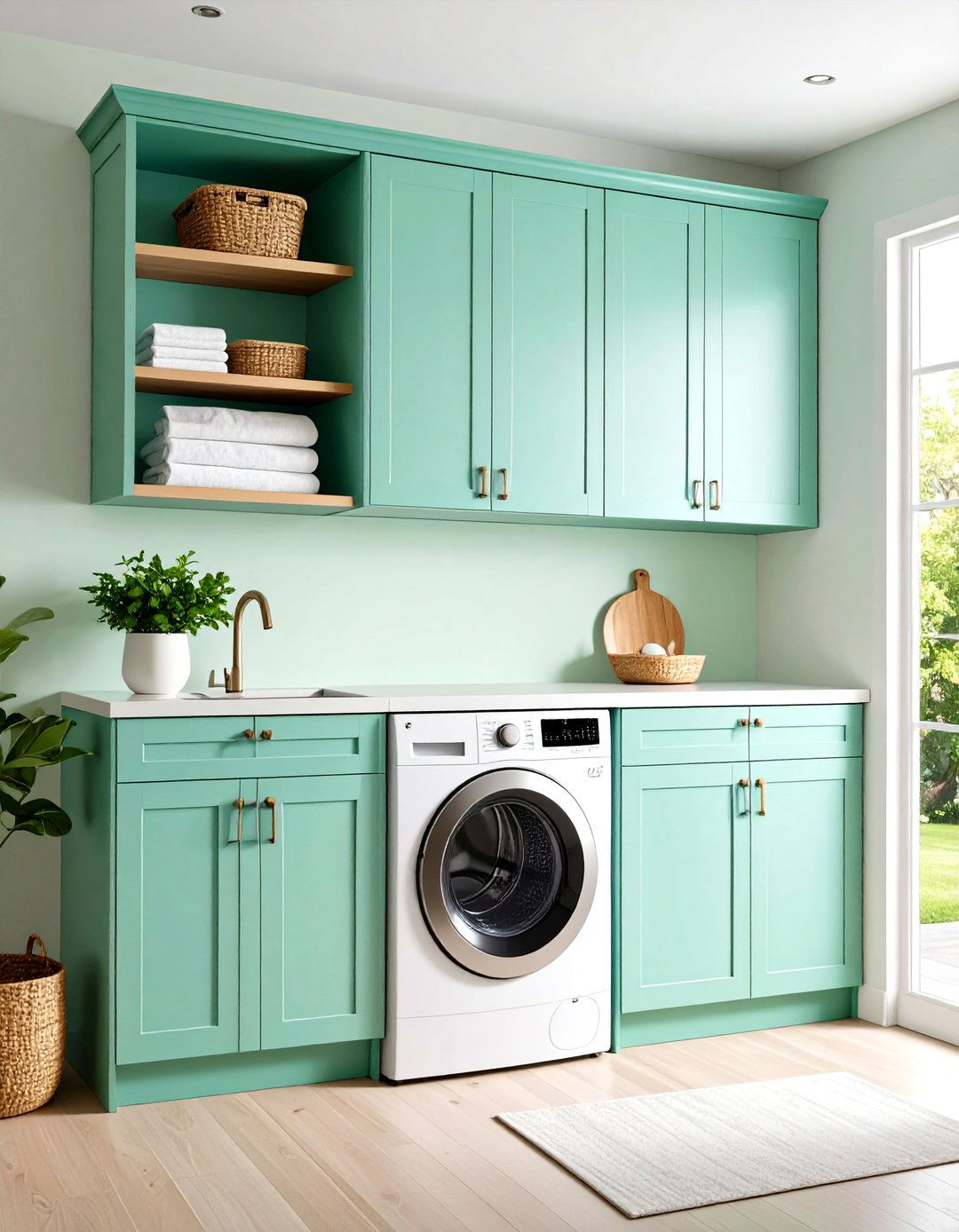
Installing custom cabinets above a top-loading washer can hide clutter while providing ample storage for detergents, dryer sheets, and cleaning supplies. Opt for shallow-depth upper cabinets mounted high enough to allow full lid clearance. Integrate adjustable shelving to accommodate tall bottles and labeled bins. Choose cabinet doors that match surrounding millwork for a seamless, built-in look. For renters, consider slim, free-standing units with open cubbies on top of the washer instead. Whether painted in a bold accent hue or classic white, custom cabinetry adds elegance and utility without overwhelming the space.
2. Galley-Style Layout
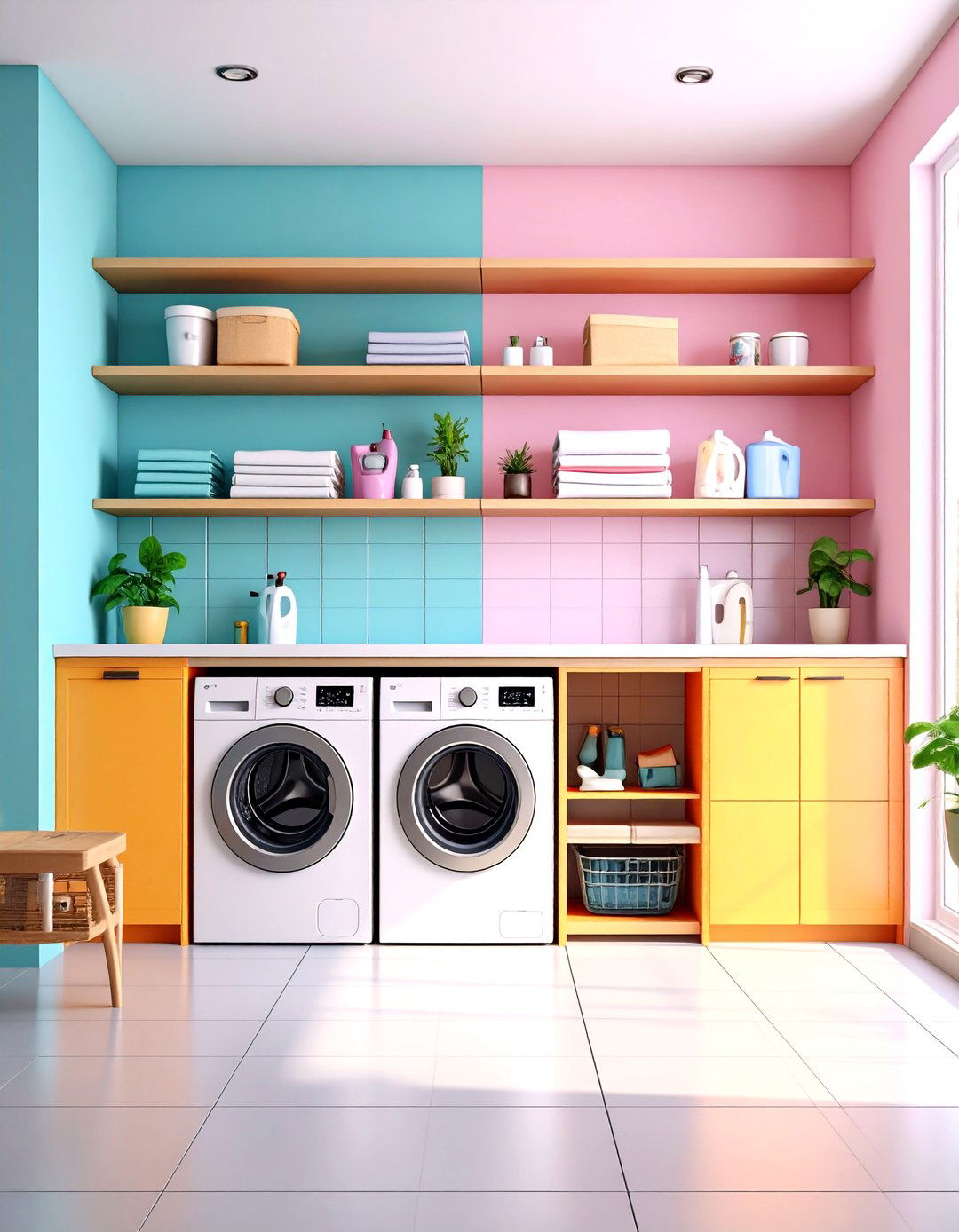
A galley layout places appliances and storage along one or both walls, ideal for narrow laundry rooms. Position your top-loader and dryer side by side with a countertop spanning both machines to create a continuous folding surface. Opposite walls can house wall-mounted rods for air-drying delicate items and floating shelves for baskets. Keep walkways at least 32 inches wide to comfortably open the washer lid. Use light-reflecting materials—like glossy subway tiles or pale paint—to visually expand the corridor. A well-planned galley system ensures an efficient workflow from sorting to folding.
3. Beaded-Curtain Entry

Swap traditional doors for beaded curtains or lightweight fabric drapes to save swing space and add personality. This option provides easy access to a laundry closet containing a top-loader and shelving. Choose moisture-resistant materials like vinyl beads or washable textiles. Curtains can be hung from a simple tension rod or ceiling-mounted track. When closed, they conceal machines and supplies; when open, they invite airflow. Patterns and colors can tie into adjacent room décor, making the laundry area feel integrated rather than purely utilitarian. This playful approach adds movement and texture to compact laundry zones.
4. Farmhouse-Style Open Shelving
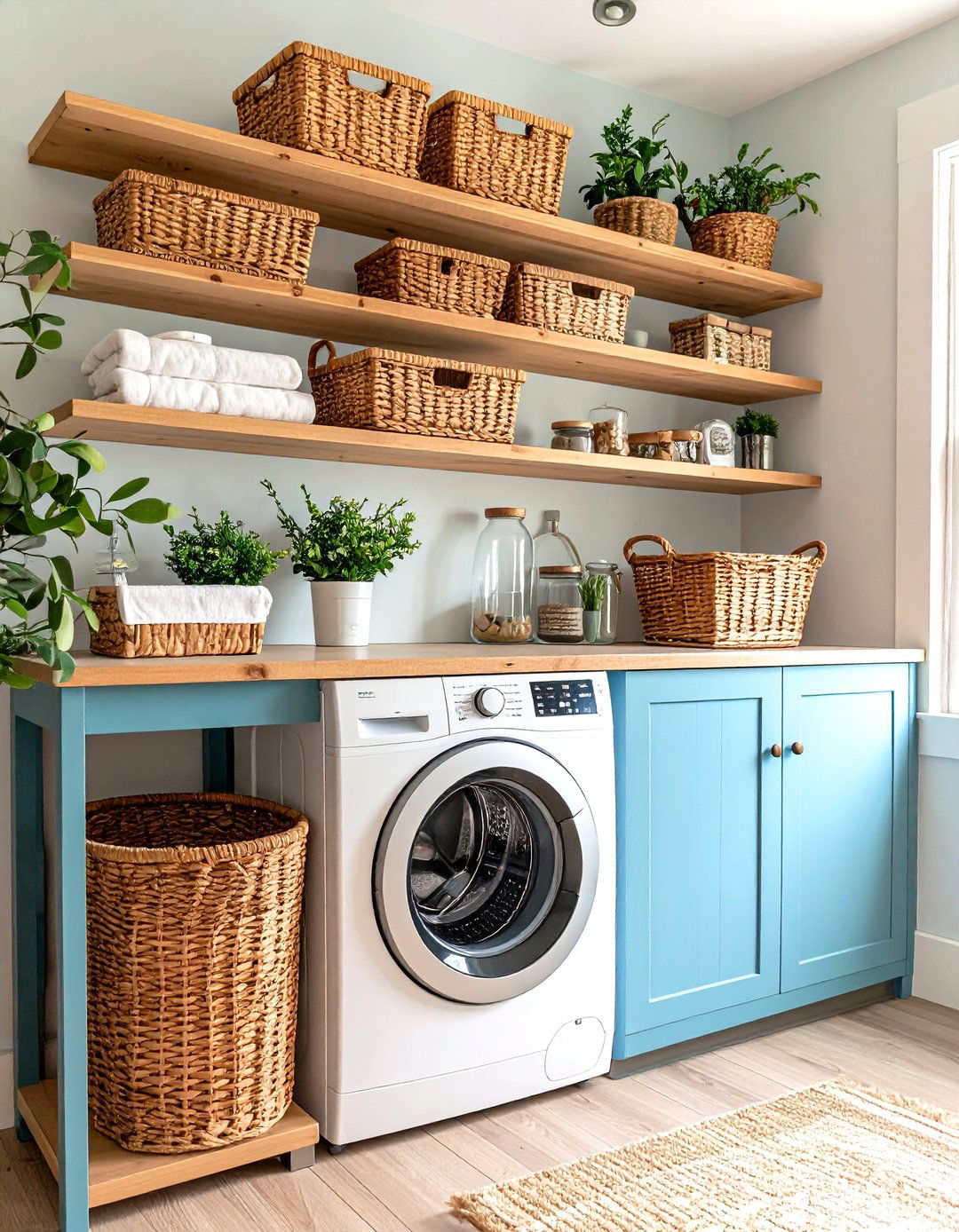
Open shelving in a light wood or painted finish lends a farmhouse charm while keeping essentials within reach. Install two to three floating shelves above your washer and dryer, leaving enough space for the lid swing. Display matching wicker baskets for sorted laundry, glass jars for clothespins, and small potted greenery. To maintain cohesion, paint the wall behind the shelves a contrasting color or apply peel-and-stick patterned wallpaper. Open shelves encourage neatness—everything must be tidy—yet they make items instantly visible. This blend of form and function suits tight waterways and adds warmth to a small laundry.
5. Statement Pendant Lighting
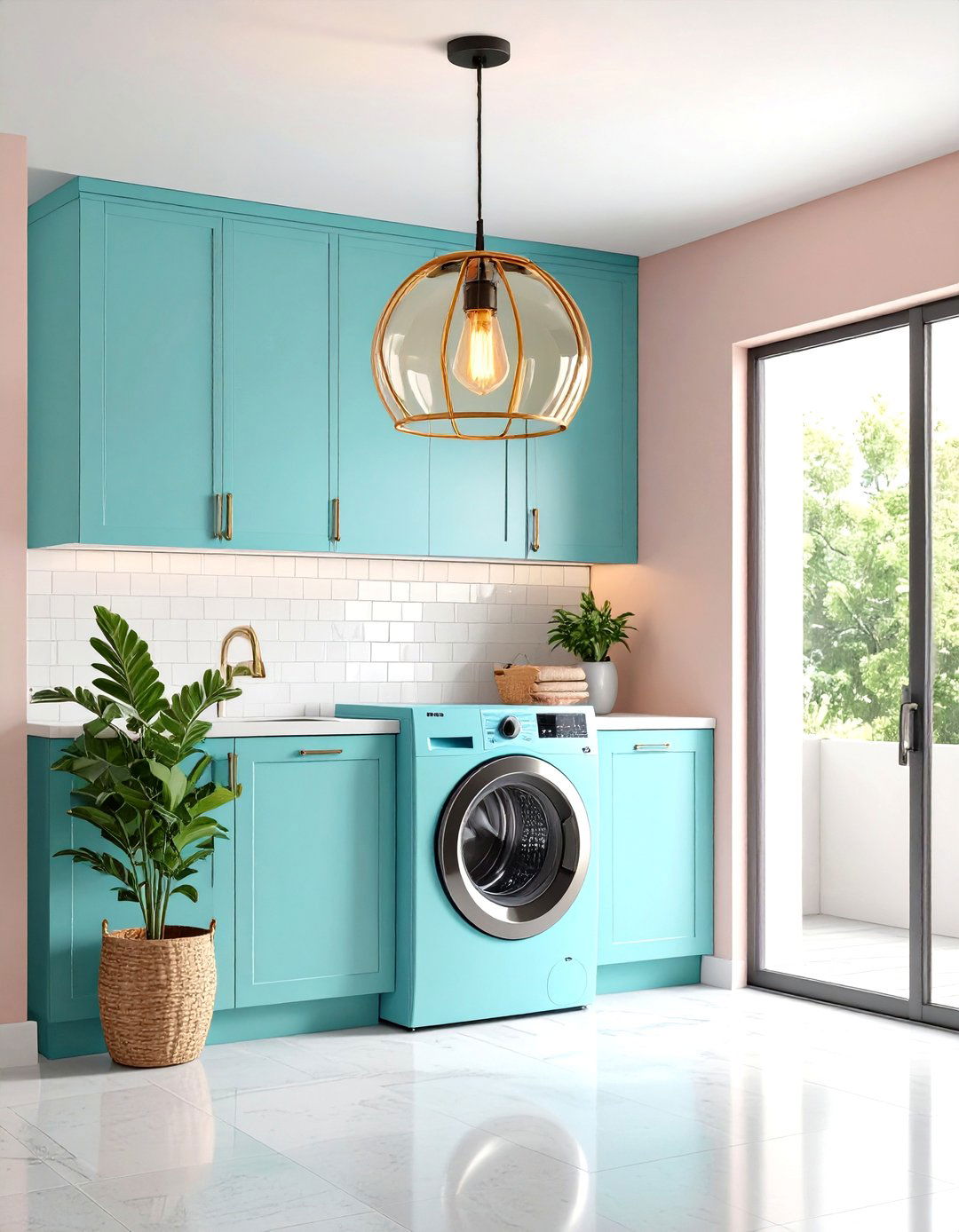
A striking pendant or cluster of small pendants can elevate even the smallest laundry room. Mount lighting fixtures over the midpoint of the machines or above a folding counter. Choose designs that cast ample downward light for detailed tasks like stain-treatment prep. Industrial-style metal pendants suit modern farmhouses, while glass orb pendants complement minimalist spaces. Ensure fixtures are damp-rated if the laundry room has high humidity. Pendants draw the eye upward, emphasizing vertical space and distracting from cramped floor areas. They also provide task lighting, reducing shadows inside top-loader lids during loading and unloading.
6. Peel-and-Stick Backsplash Tiles

Transform the wall behind your top-loading washer with peel-and-stick backsplash tiles. These come in subway, hexagon, or Moroccan patterns and install in minutes without grout. They protect walls from water splashes and detergent drips, while visually opening the room. Lighter hues reflect light, making the space feel larger. For renters, removable tiles allow easy updates. Pair with a small stainless-steel shelf to hold soap dispensers. Tiles create a focal point that elevates basic laundry chores. This budget-friendly upgrade refreshes the area and ties into adjacent kitchen or bathroom palettes.
7. Fold-Down Folding Table
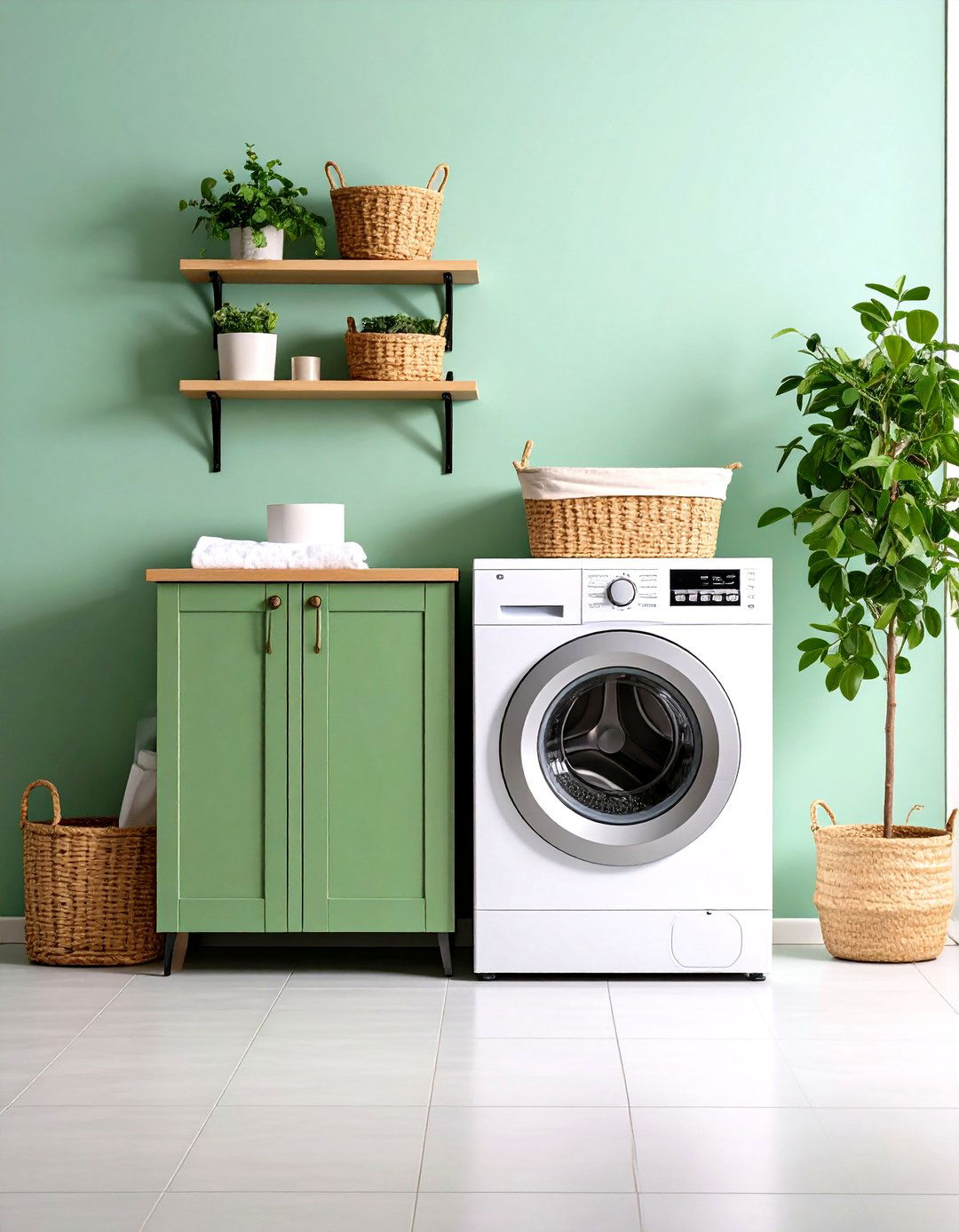
When counter space is scarce, a fold-down table mounted on the wall beside your washer offers a quick folding station. Use a hinged plywood panel reinforced with folding brackets. When not in use, it folds up and displays framed art or a decorative mirror. Ensure the surface sits at 36 inches high—standard countertop height—for ergonomic sorting. Below, hang cloth bags for sorting lights, darks, and delicates. Materials like waterproof laminate resist moisture and bleach. A fold-down table adapts to tight corridors, providing surface area only when needed without permanently intruding into walkways.
8. Pegboard Wall Organizer

Install a pegboard on an adjacent wall to your top-loader for hanging frequently used items—measuring cups, lint rollers, small baskets, and cleaning brushes. Paint the pegboard to match or contrast the room’s palette. Pegboards are highly customizable: move hooks and shelves to fit changing needs, such as adding a small shelf for a detergent bottle. Use magnetic bins for metal clips and pins. This system frees counter and cabinet space, turning a bare wall into a functional tool board. Pegboards also encourage creative displays, making the laundry room feel intentional and well-organized.
9. Rolling Utility Cart

A slim, rolling cart on casters fits between your washer and wall or beside the dryer, offering hidden storage for detergent pods, spray bottles, and cleaning cloths. Choose a cart at least 10 inches wide for stability. When you need supplies, simply pull it out; when finished, tuck it back. Some carts feature handles and rubber wheels for easy maneuvering. To disguise the cart, drape a matching fabric panel or install a sliding curtain. Lockable casters prevent unwanted movement during the washer’s spin cycle. A rolling cart maximizes narrow gaps without permanent installation.
10. Over-Door Hooks and Racks
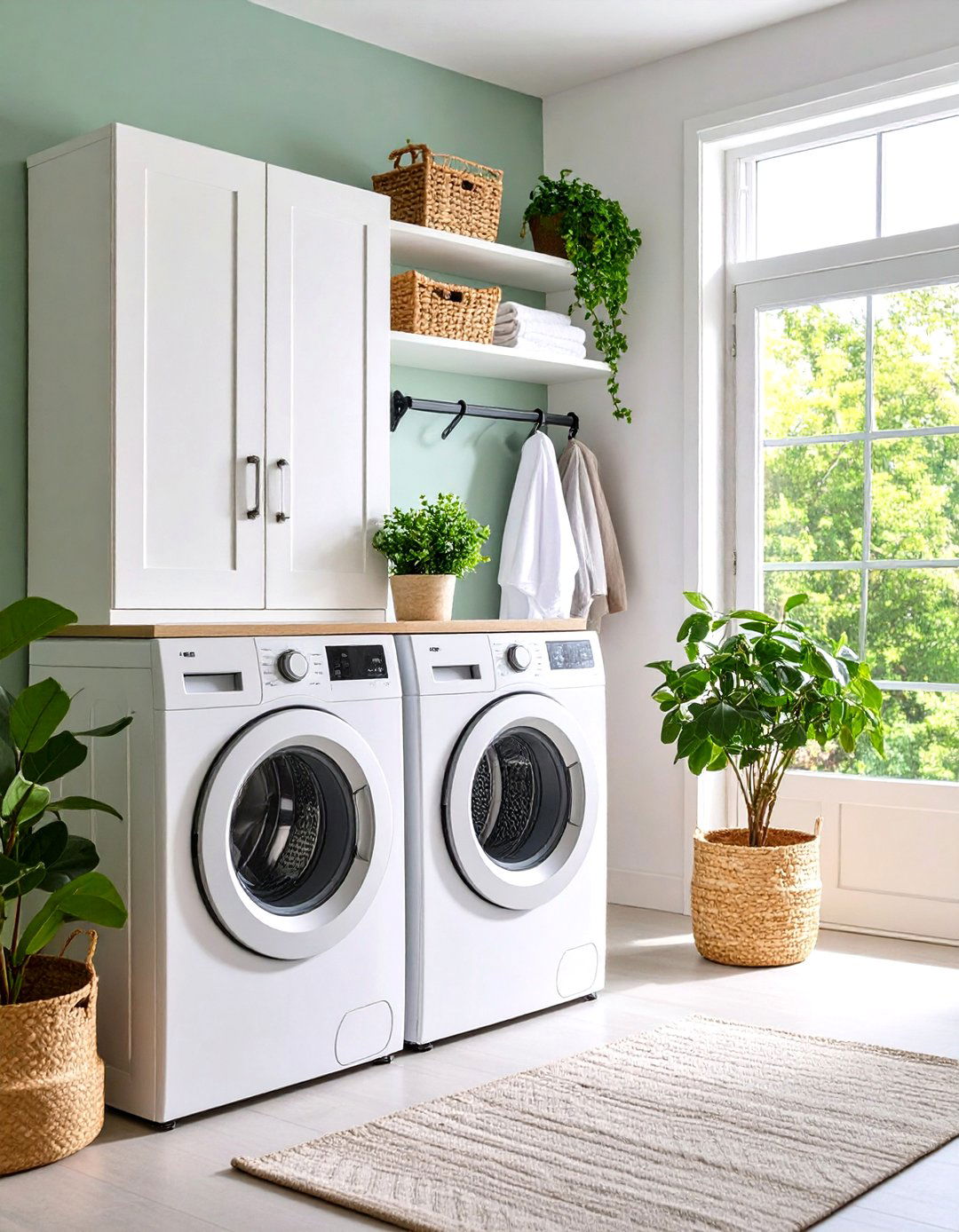
Install hooks or a rack on the back of the laundry room door for hanging ironing boards, drying racks, or a laundry tote. Choose slim-profile hangers to avoid adding bulk. Over-door storage keeps floor space clear and places tools at eye level. Reinforce the door with anchors to support heavier items. For a top-loader, ensure the door swing doesn’t interfere with the washer lid. Combine with a magnetic strip on the inside of the door to hold scissors or small metal laundry tools. This simple hack uses often-overlooked vertical real estate.
11. Integrated Laundry Sink
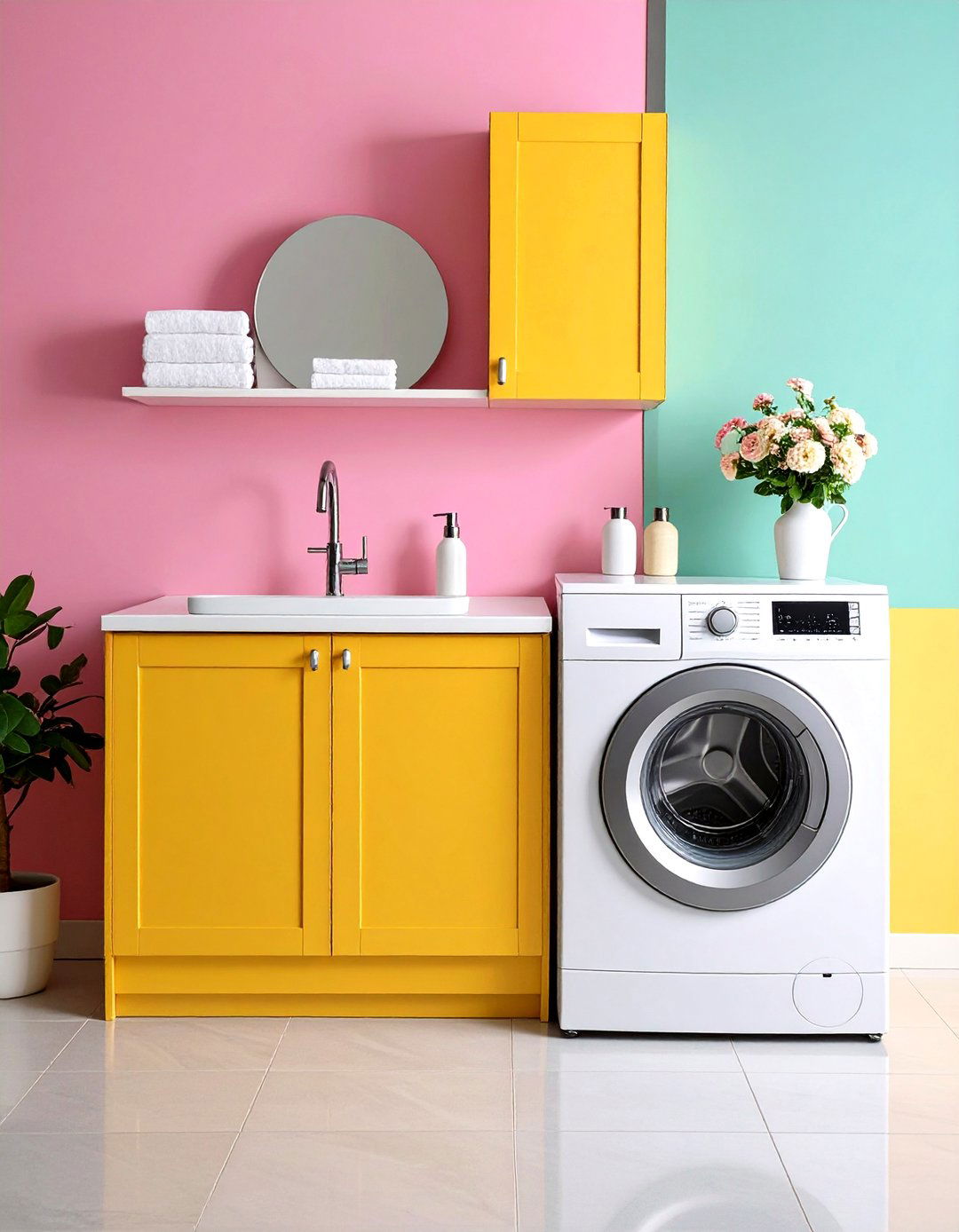
If plumbing allows, add a narrow laundry sink next to your top-loader for pre-soaking and hand-washing delicates. Opt for a laundry trough sink no wider than 20 inches. Surround it with a slim countertop that spans over the washer for continuous workspace. Under the sink, include tilt-out hampers or shelving for detergents. High-arc faucets with a pull-down sprayer facilitate soaking. A white porcelain sink brightens the room; stainless steel gives an industrial edge. Integrating a sink boosts functionality, enabling stain treatments without trips to the kitchen or bathroom.
12. Pull-Out Ironing Board
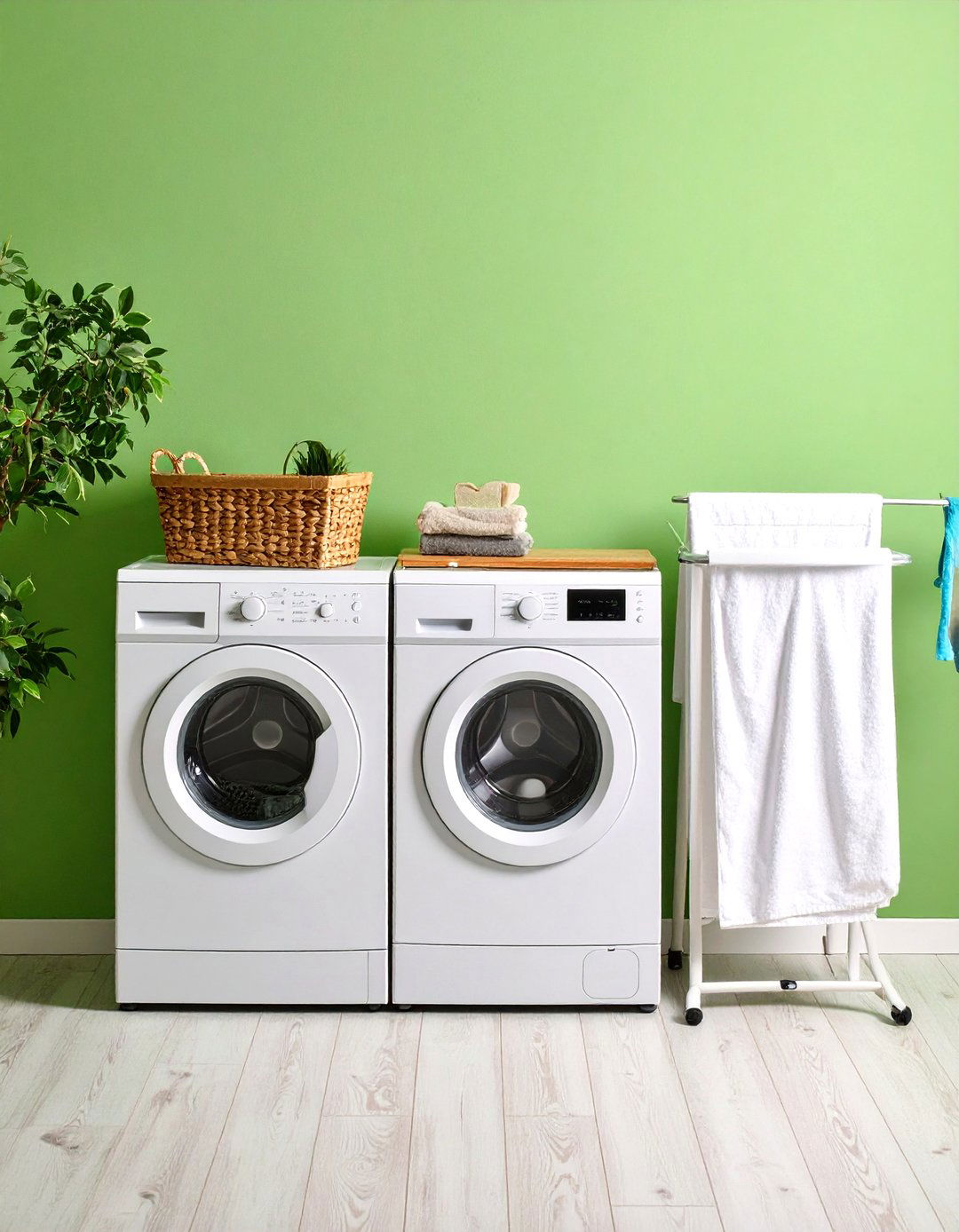
A wall-mounted pull-out ironing board stores flat against the wall when not in use, sliding out on hinges when needed. Position it above or beside the top-loading washer, ensuring it clears the lid. These units often include small shelves for a spray-starched starch container or irons. Choose moisture-resistant materials and install within reach of an outlet. Some models include integrated cord storage to minimize clutter. When folded away, the board looks like simple cabinetry. This hidden station transforms laundry tasks into a streamlined routine without sacrificing precious square footage.
13. Built-In Hamper Cabinet
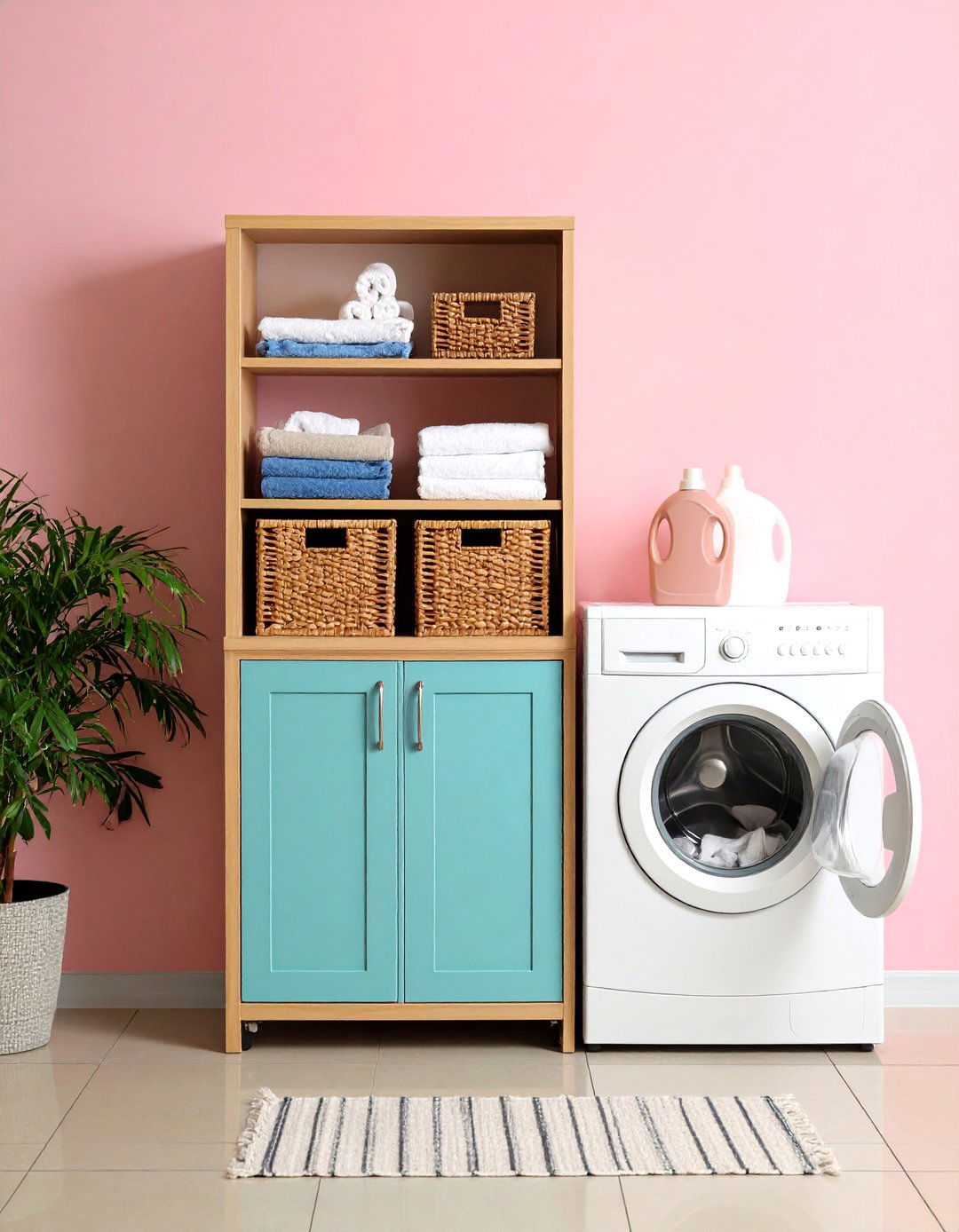
Conceal pull-out hampers within a base cabinet next to your top loader. Use tilt-out doors or sliding drawers that hold laundry bags. Label each bag for whites, colors, and delicates. A solid countertop above the cabinet doubles as sorting or folding space. Integrated hampers reduce floor clutter and keep dirty laundry contained. When combined with soft-close hardware, the doors operate quietly—ideal for laundry near living spaces. Paint the cabinet to match your custom upper cabinetry for a cohesive built-in appearance.
14. Floating Shelf Trios
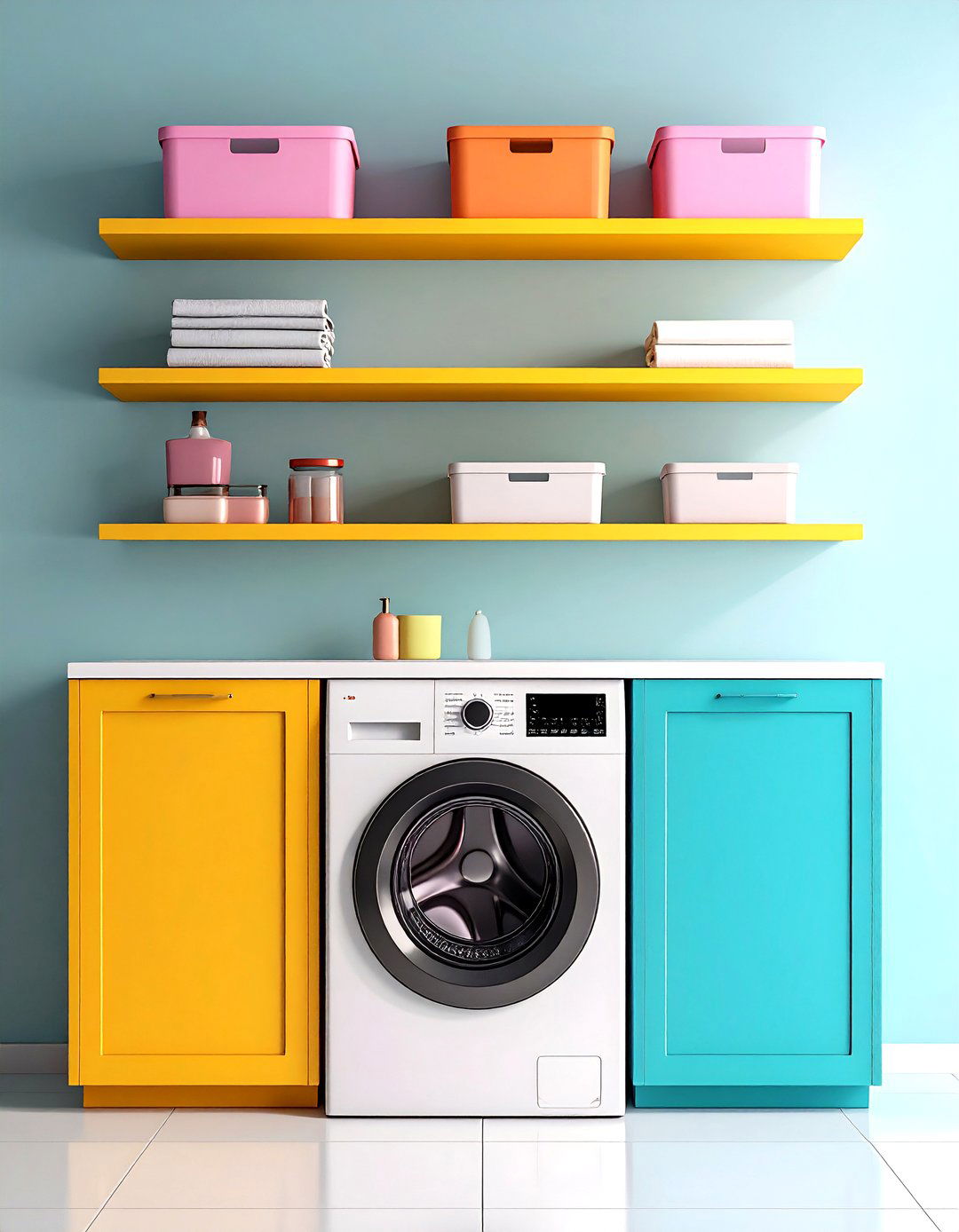
Group three narrow floating shelves above the washer for airy, minimalist storage. Space them so they don’t impede the washer lid’s motion. Use identical containers—such as matching ceramic jugs—for detergent to maintain a uniform look. Add a small accent piece like a framed print or faux plant to personalize the space. Floating shelves create a light, open feel versus bulkier cabinetry, and they can be installed at any height to respect the top loader’s clearance requirements.
15. Mirror-Front Cabinet

Install a shallow cabinet with a mirrored front above your washer to visually expand the laundry room. Mirrors reflect light and give the illusion of depth, counteracting tight boundaries. Behind the mirror, store small cleaning supplies, clothespins, or hygiene items. Choose an anti-fog mirror or ventilate the room to prevent moisture buildup. A mirrored cabinet doubles as décor, blending function with elegance while making daily chores more pleasant.
16. Ceiling-Mounted Drying Rack
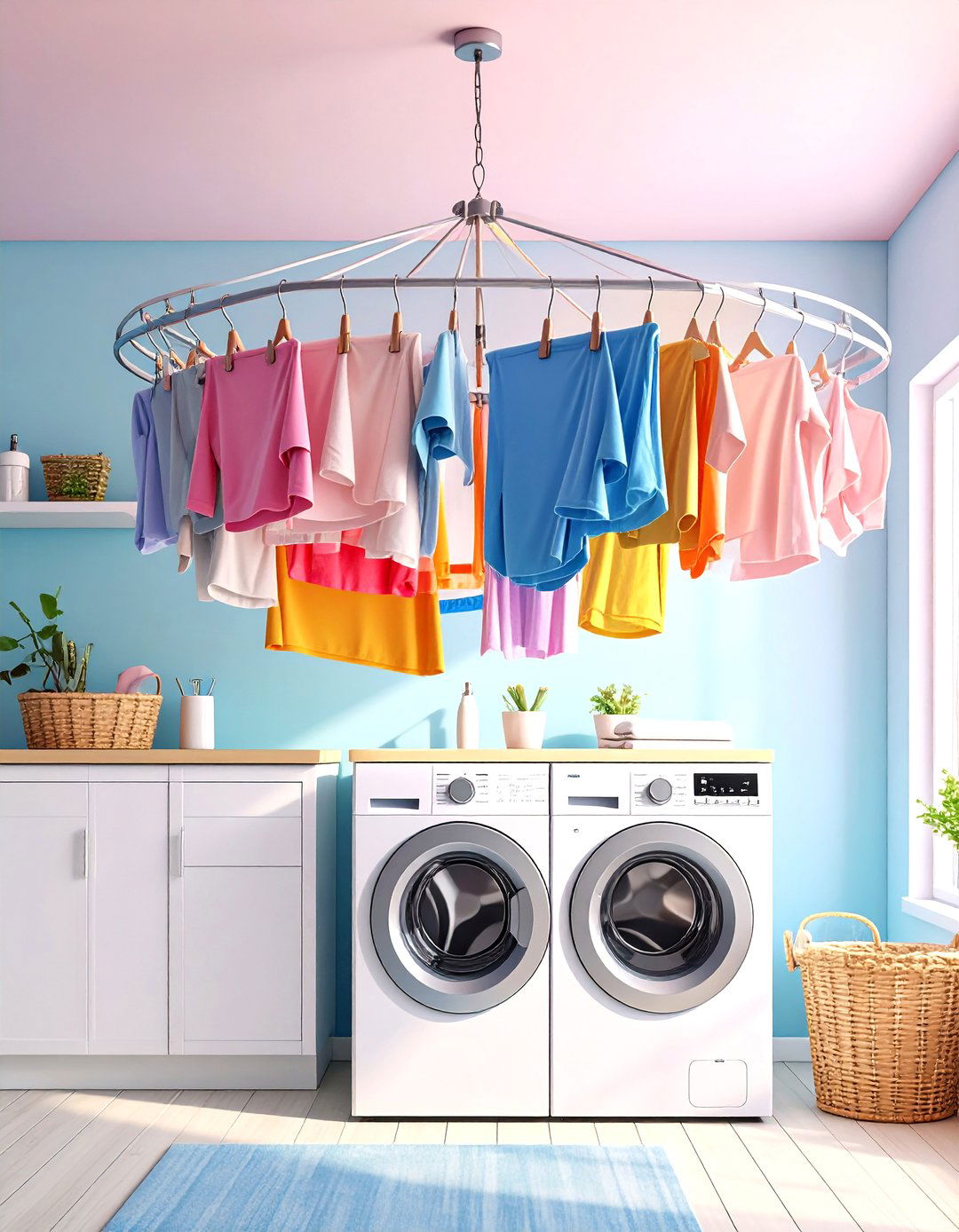
Use a pulley-system drying rack mounted on the ceiling to air-dry delicates. Lower it to hang items, then lift it out of the way to clear floor and wall space. Position it above the washer so damp items drip directly into the machine. When not in use, it remains near the ceiling, invisible yet ready. This vertical solution adds minimal visual clutter and exploits otherwise unused overhead volume.
17. Chalkboard Accent Wall
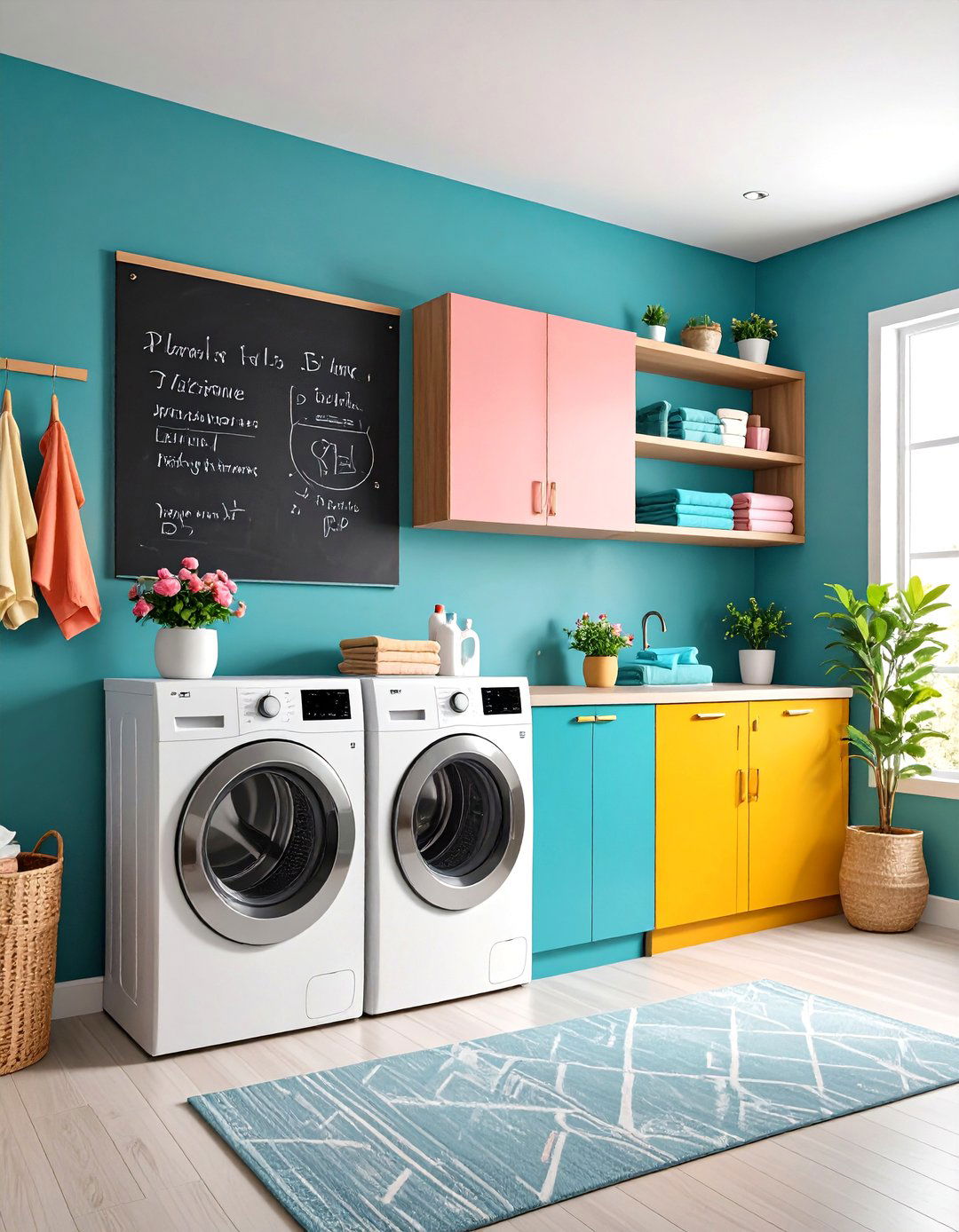
Paint one laundry room wall with chalkboard paint for notes, sorting instructions, and decoration. Use it to jot down detergent restock reminders, family chore assignments, or inspirational quotes. A chalkboard surface hides minor scuffs and adapts over time. Paired with a small ledge beneath to store chalk and erasers, this feature makes the space interactive and functional—especially helpful when teaching kids laundry basics.
18. Hooks and Rods Gallery
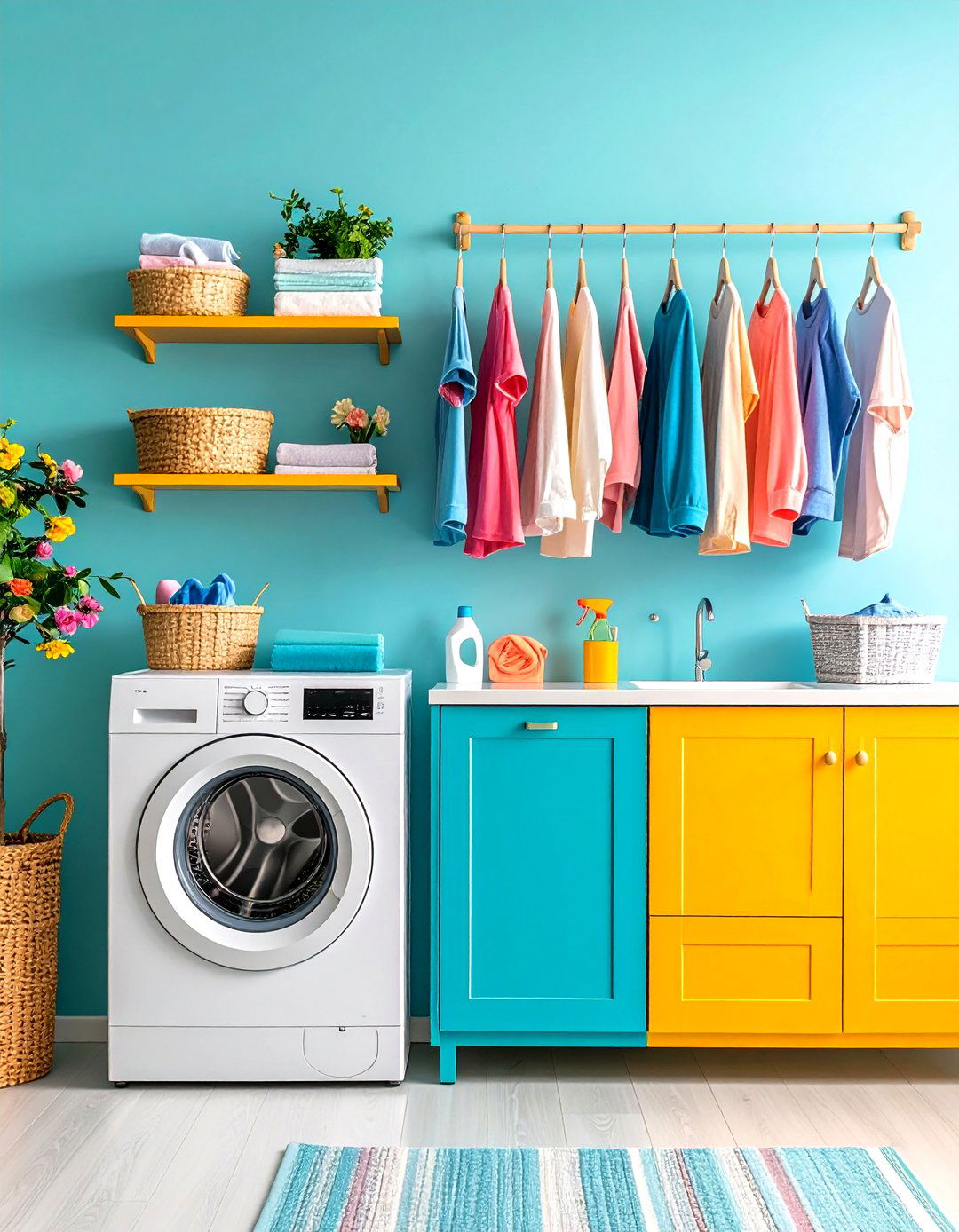
Create a gallery wall of hooks and rods to hang cleaning brushes, drying mesh bags, and delicates. Mix S-hooks, rod brackets, and wire baskets for varied storage. Line them above or beside the top-loader, ensuring all hooks clear lid movement. Label hooks for frequently used items to maintain order. This approach turns a blank wall into a versatile toolkit, keeping essentials organized and at arm’s reach.
19. Sliding Barn Door
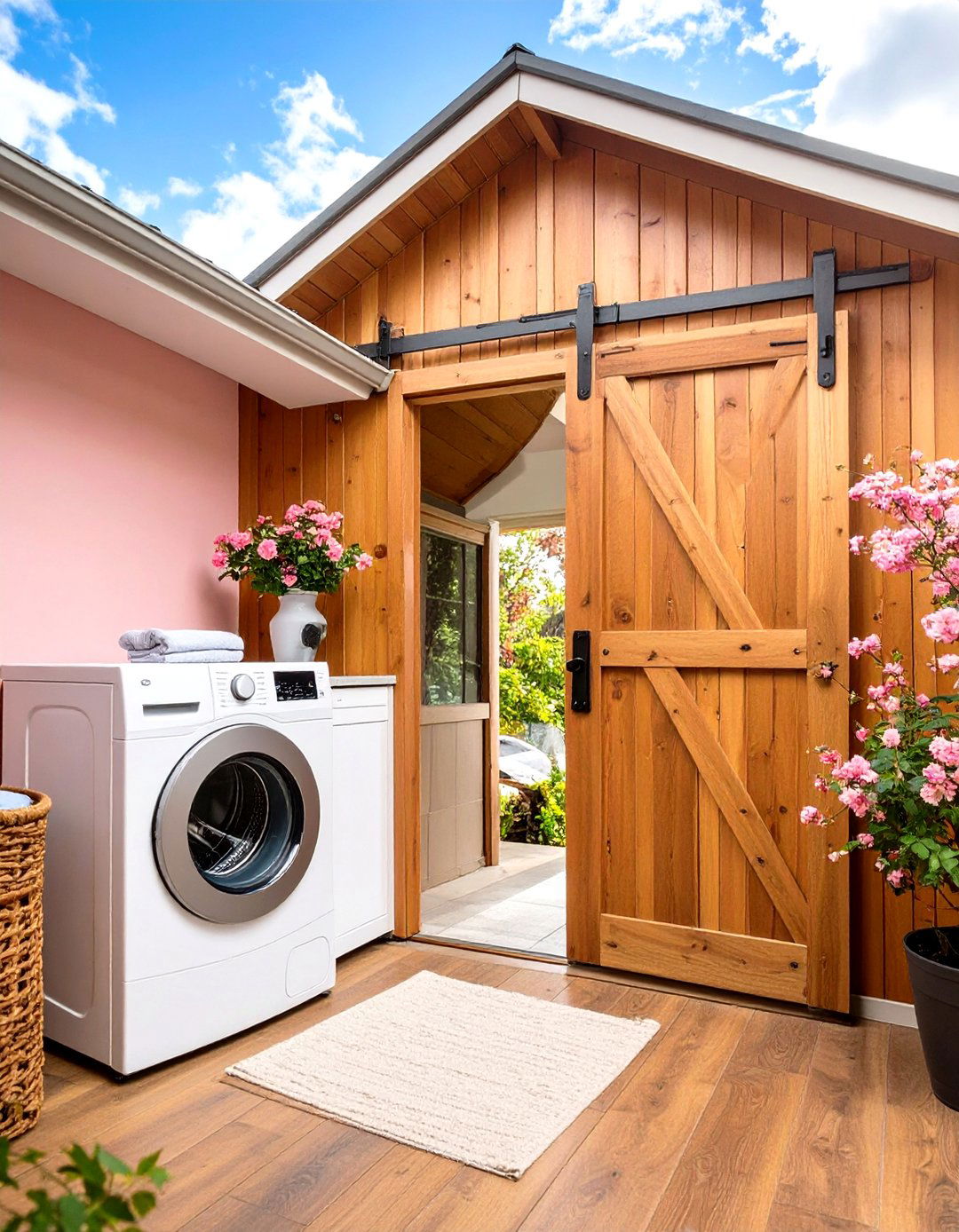
Replace a swinging door with a sliding barn door to save clearance for the washer lid. Choose a lightweight design and install a floor guide to prevent sway. Paint it in a bold color or stain it for rustic charm. When open, the door doesn’t intrude into the laundry room or adjacent space. Sliding doors also offer visual interest and can double as decorative focal points.
20. Combined Mudroom-Laundry Space

If your top-loading washer sits near the entryway, merge laundry and mudroom functions. Add a bench with built-in cubbies for shoes and a coat rack above. Use baskets on shelves for gloves, hats, and laundry uniforms. Install a small message center with hooks and calendar above the washer. This multifunctional approach streamlines morning routines, keeping dirty uniforms and outdoor gear separate from living areas while photographing chores into a single, efficient zone.
Conclusion:
A small laundry room with a top-loading washer can become a highly organized, stylish space through thoughtful design. Key strategies include maximizing vertical storage, incorporating multifunctional elements like fold-down tables and pull-out ironing boards, and choosing fixtures that respect lid clearance. By blending custom cabinetry, open shelving, and clever hardware, even the most compact laundry zones can accommodate essential tasks without feeling cramped. Implementing these 20 ideas will help you craft a laundry room that is both beautiful and supremely functional, transforming daily chores into a more enjoyable experience.


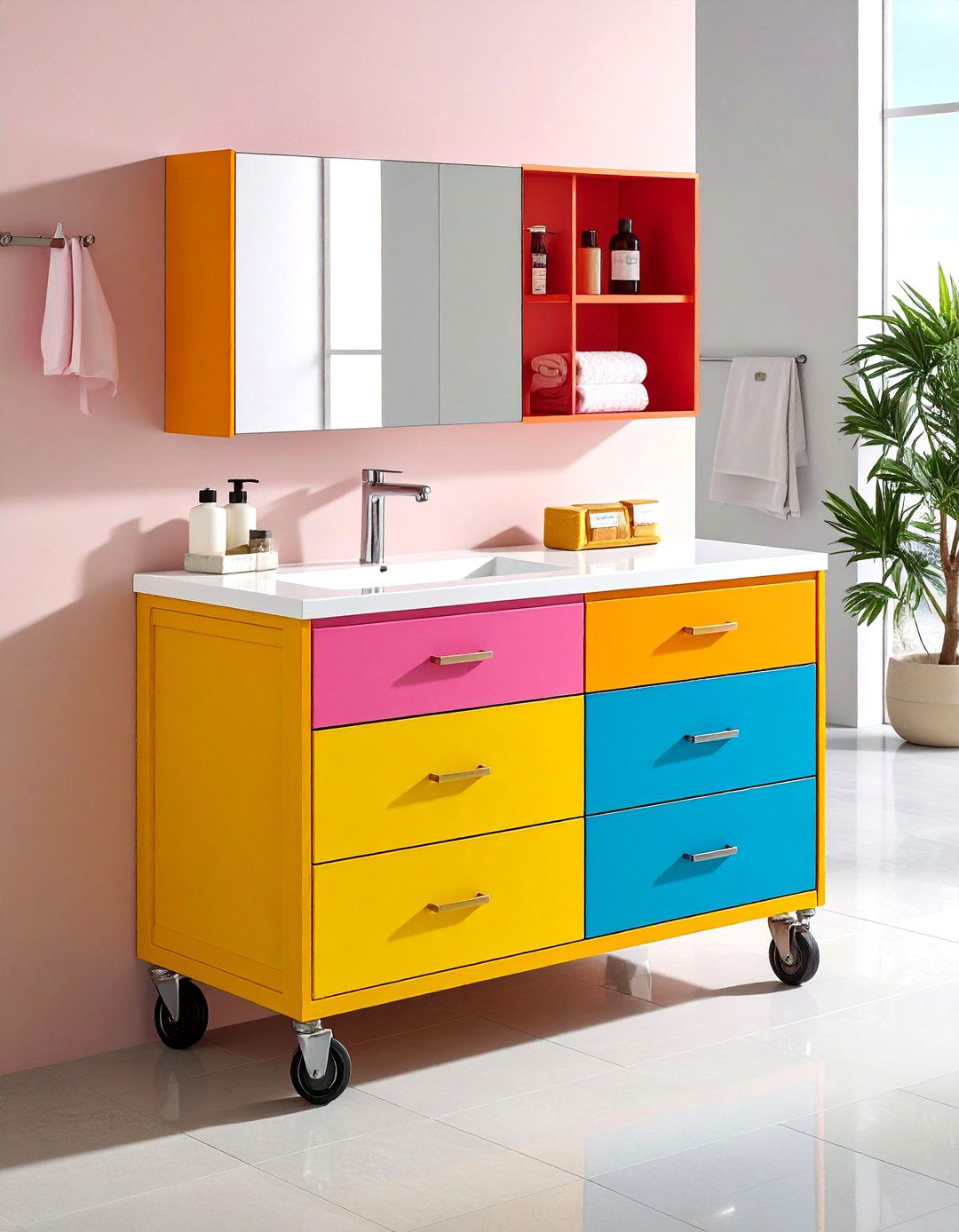


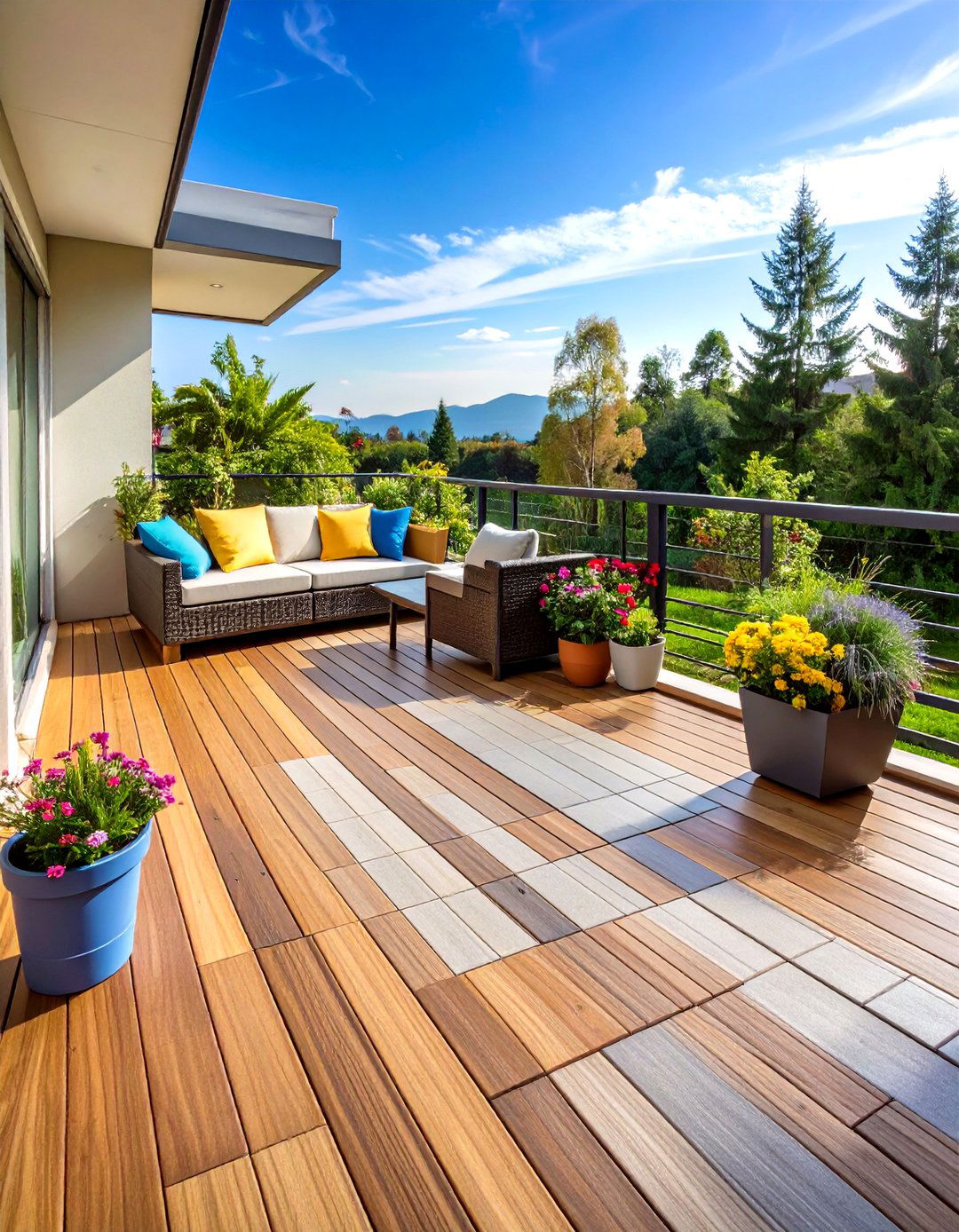
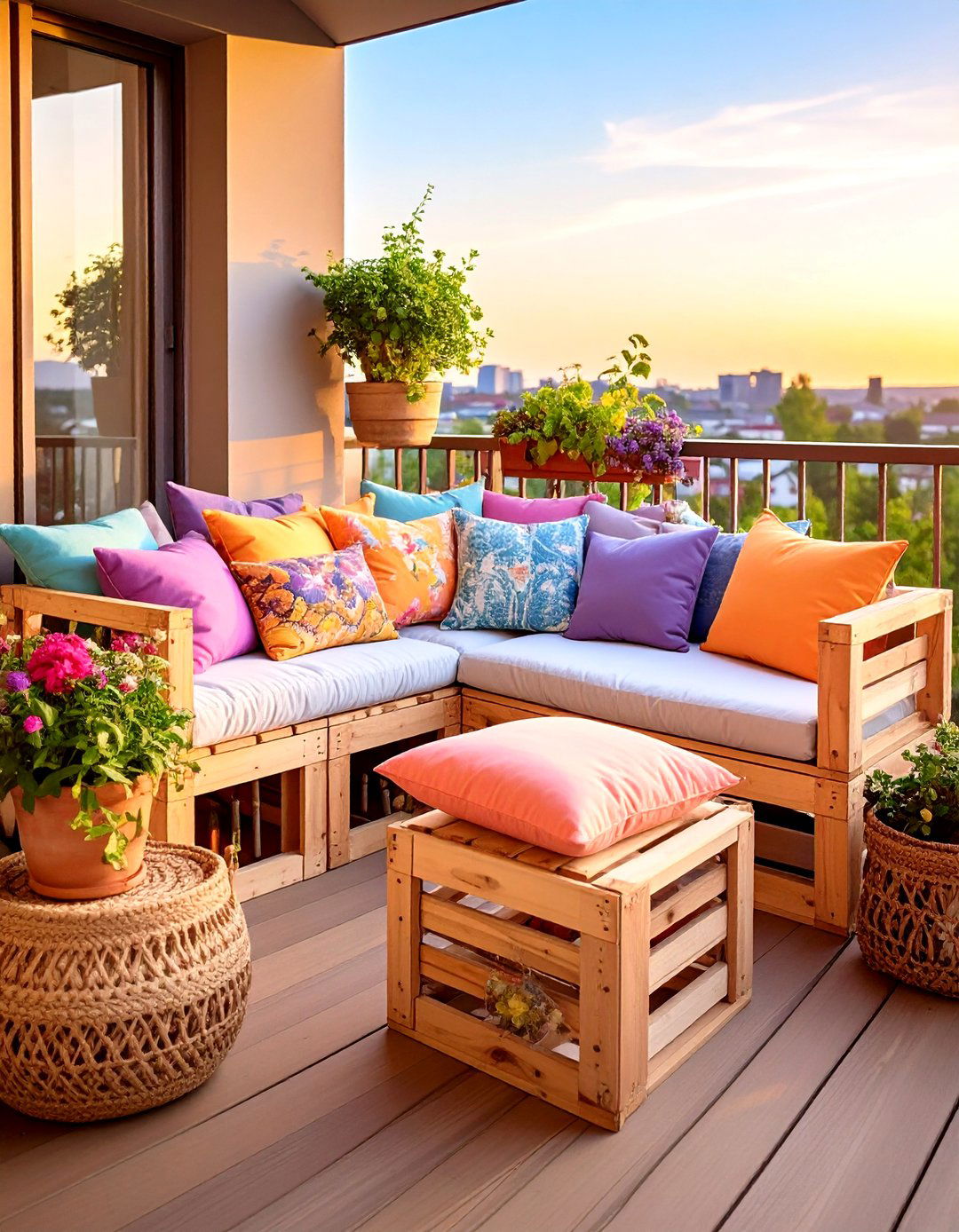
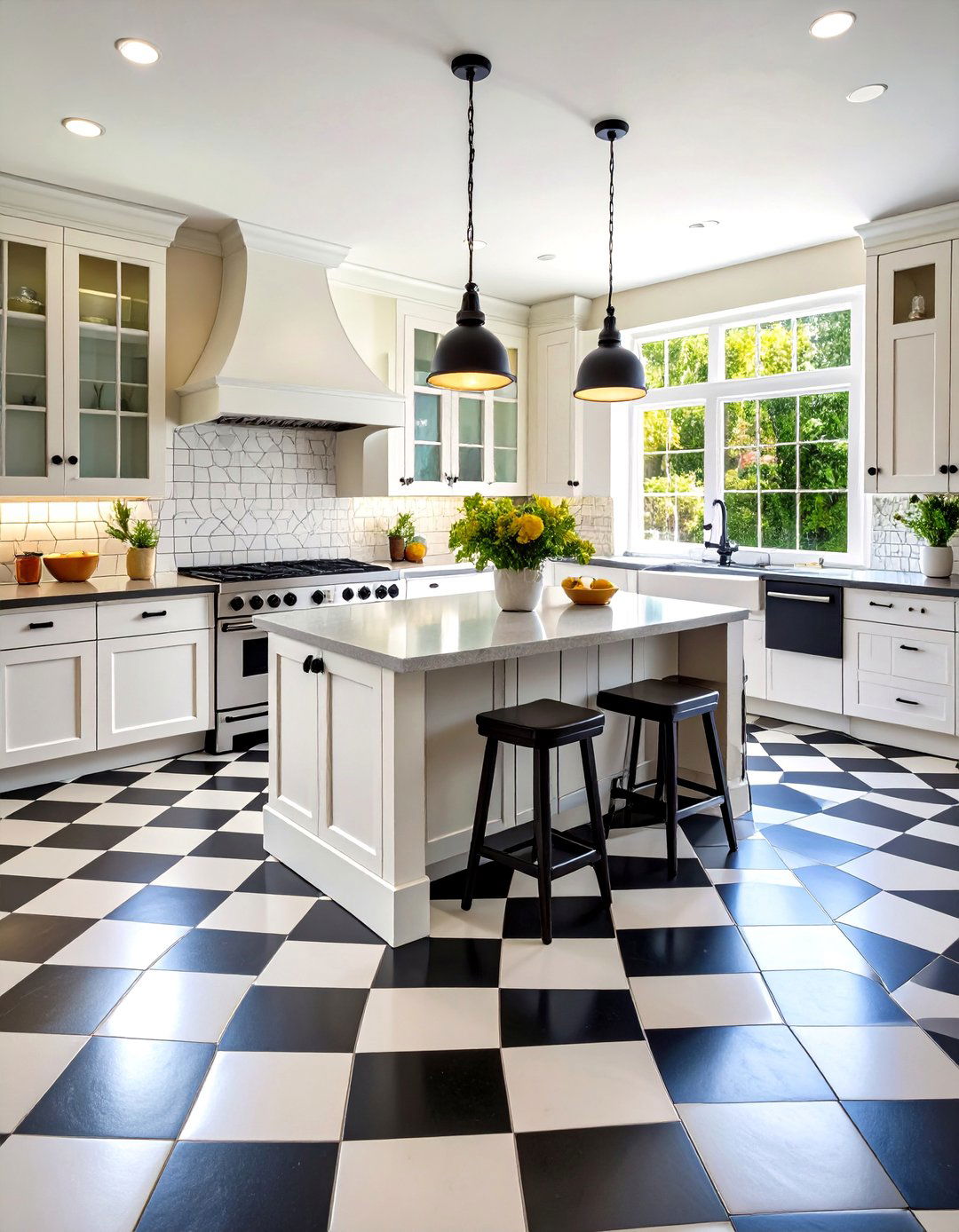

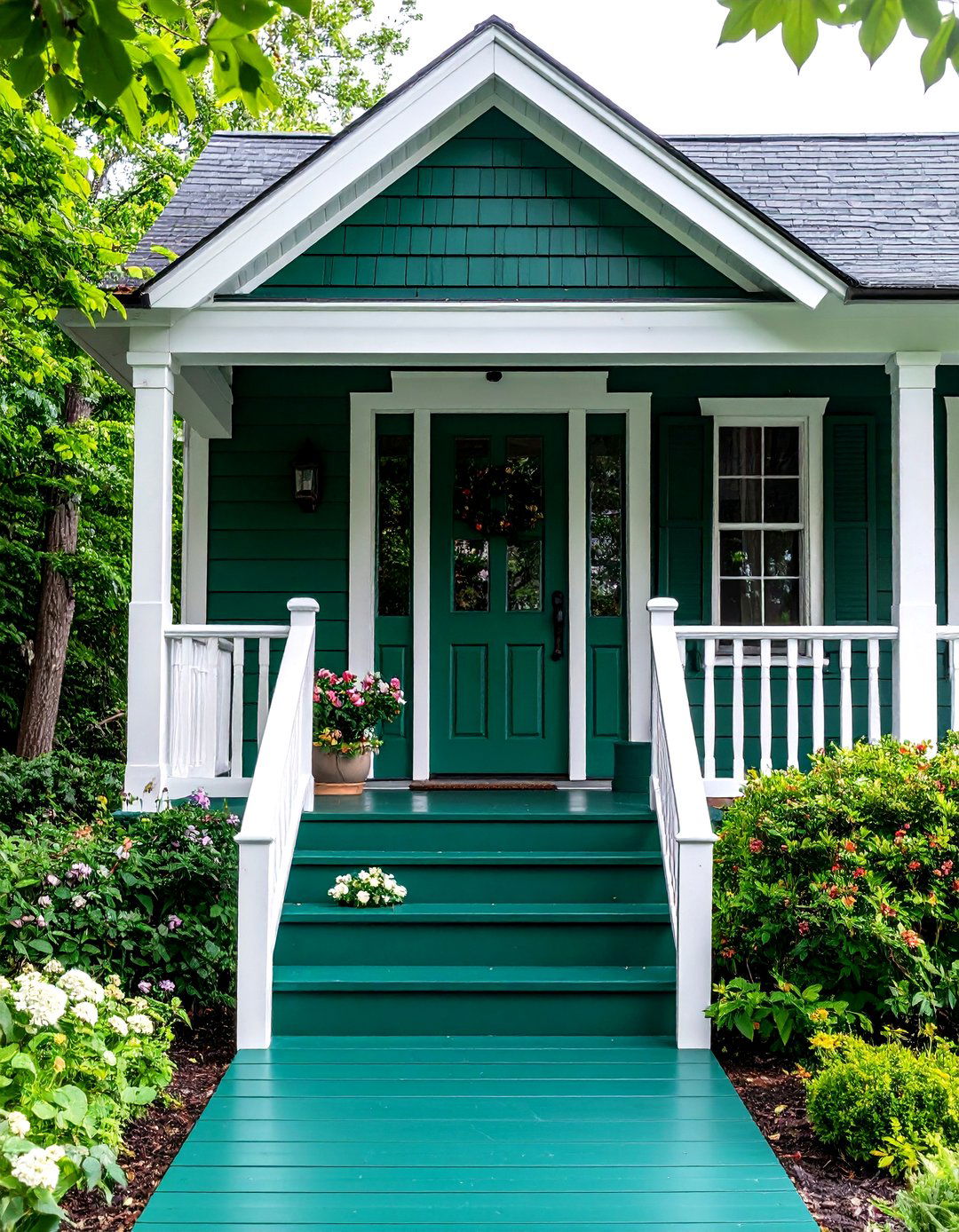
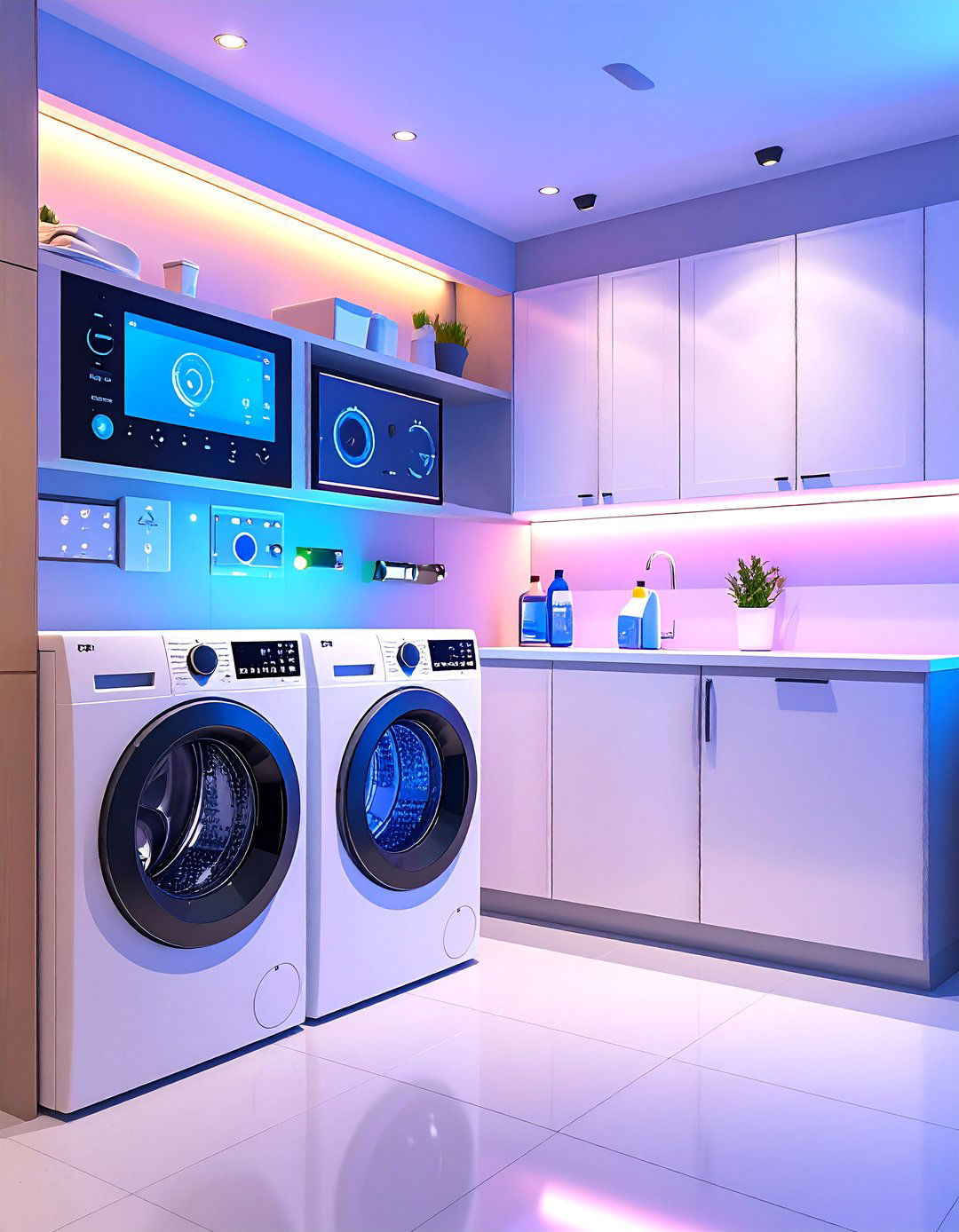
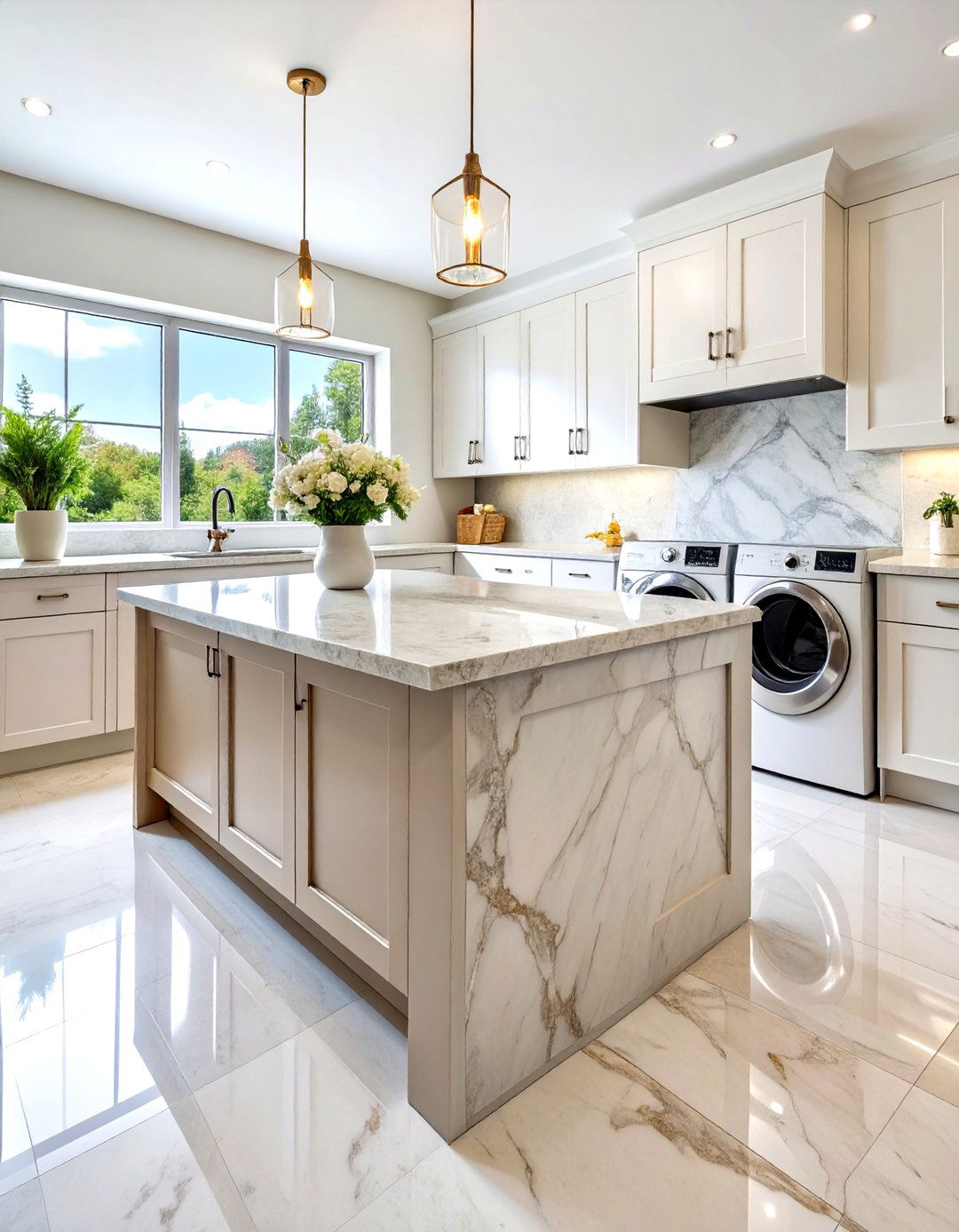
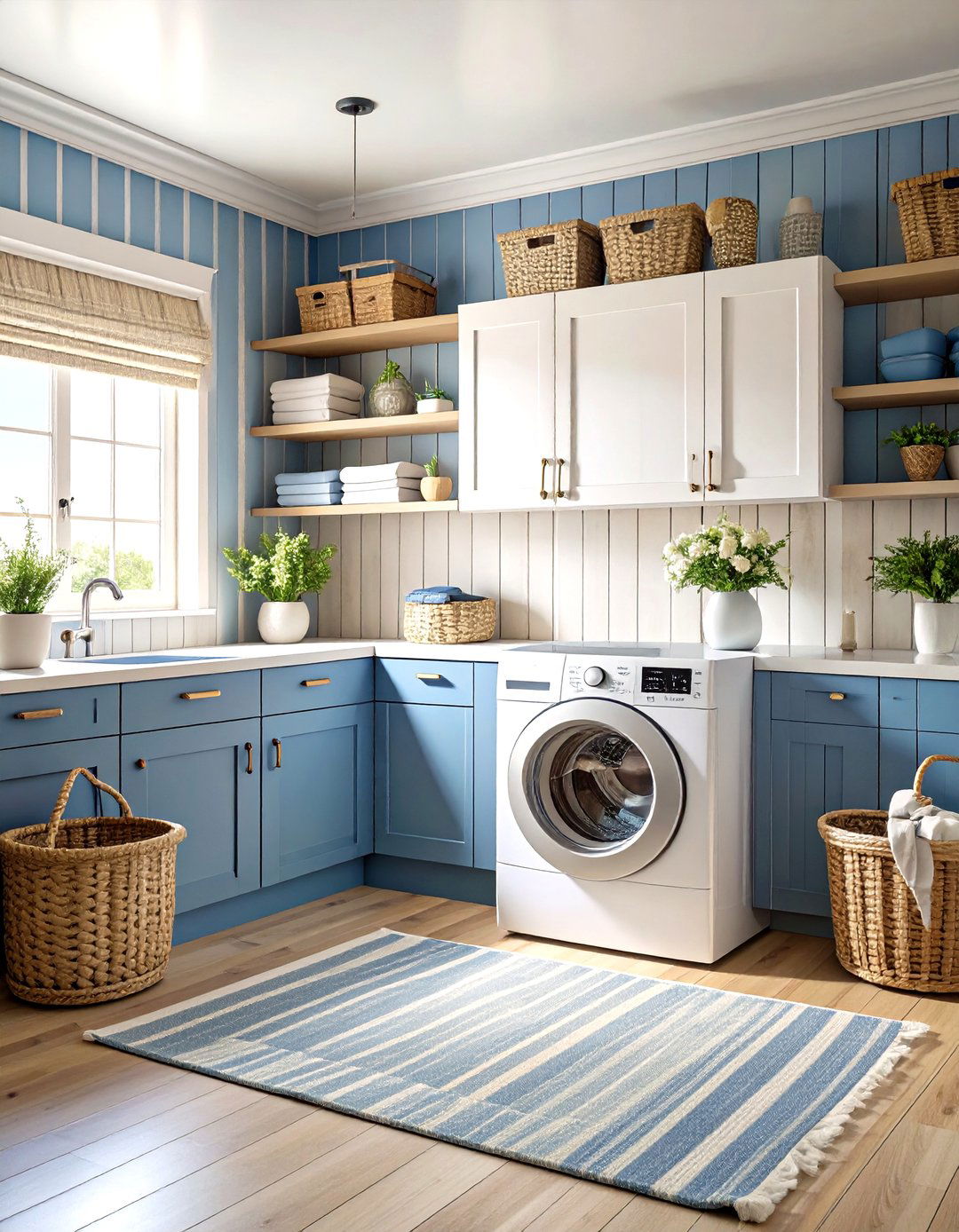
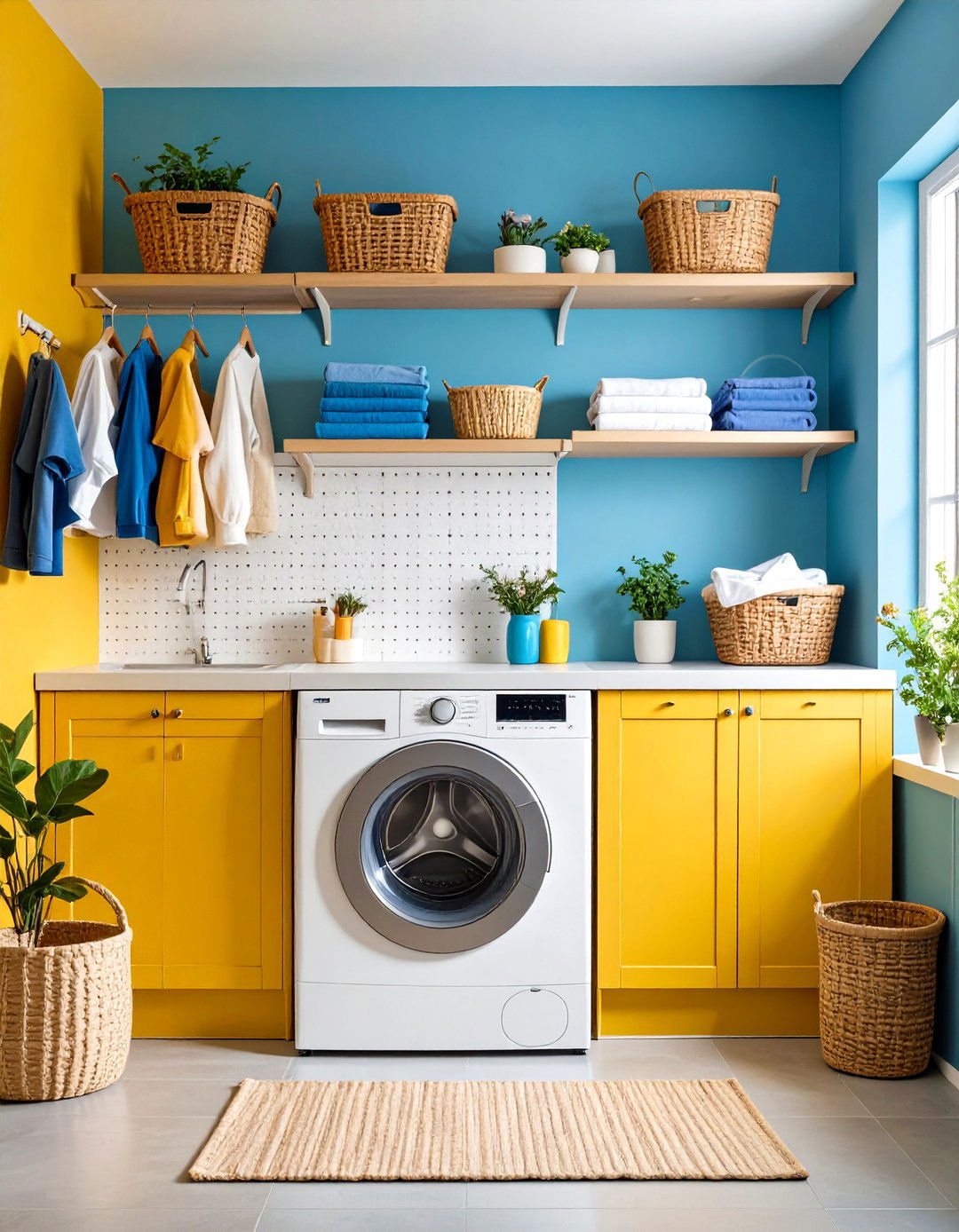

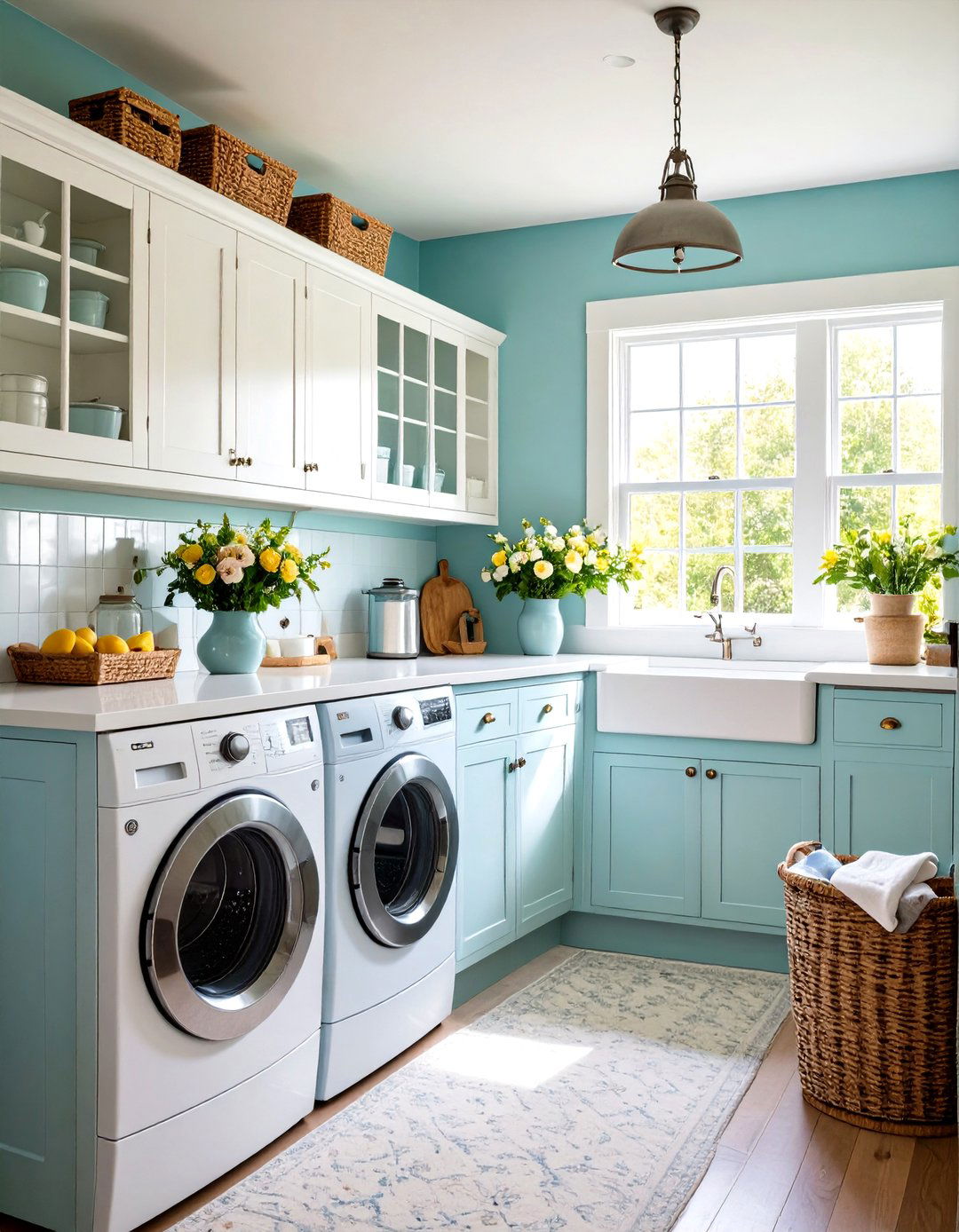
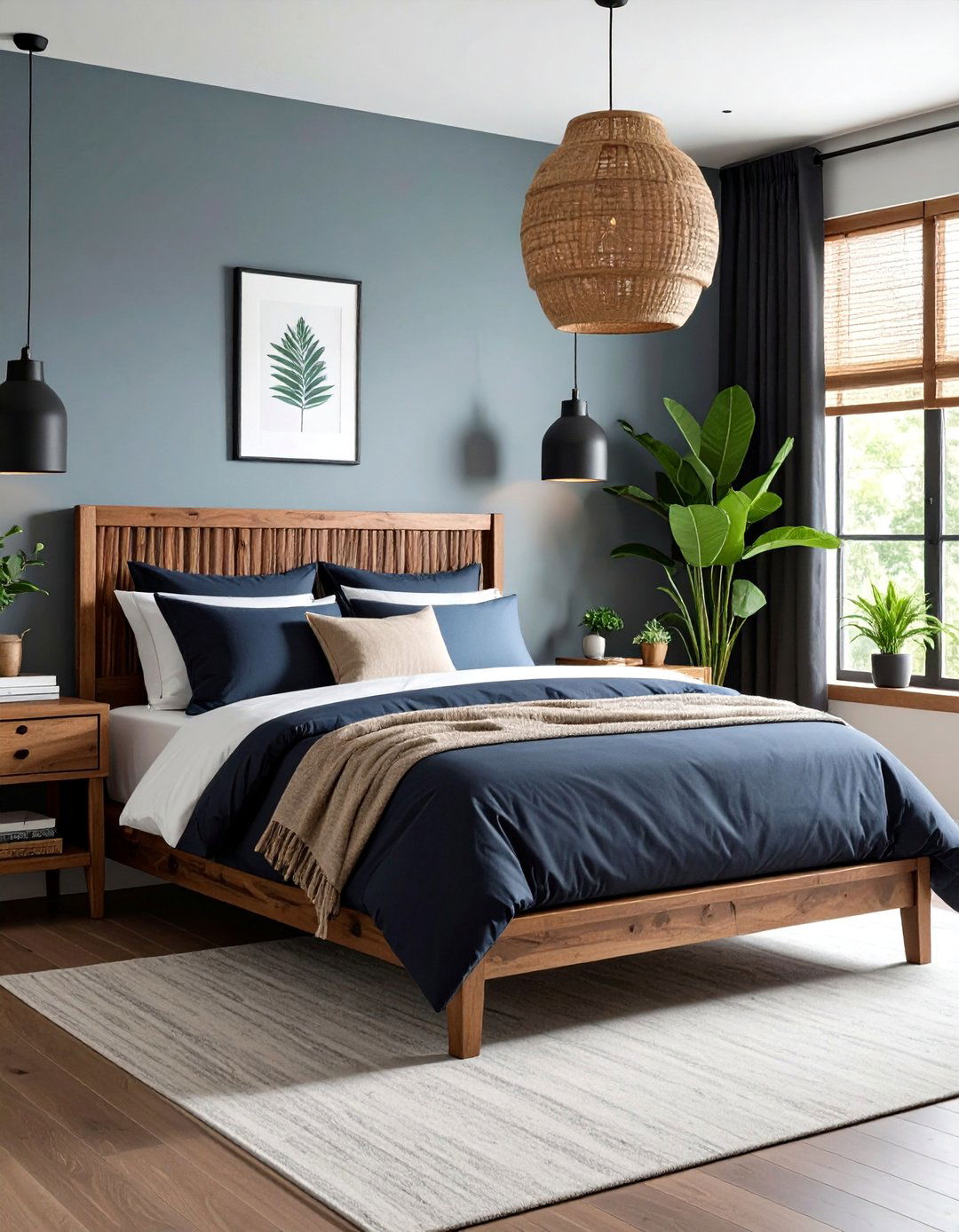
Leave a Reply